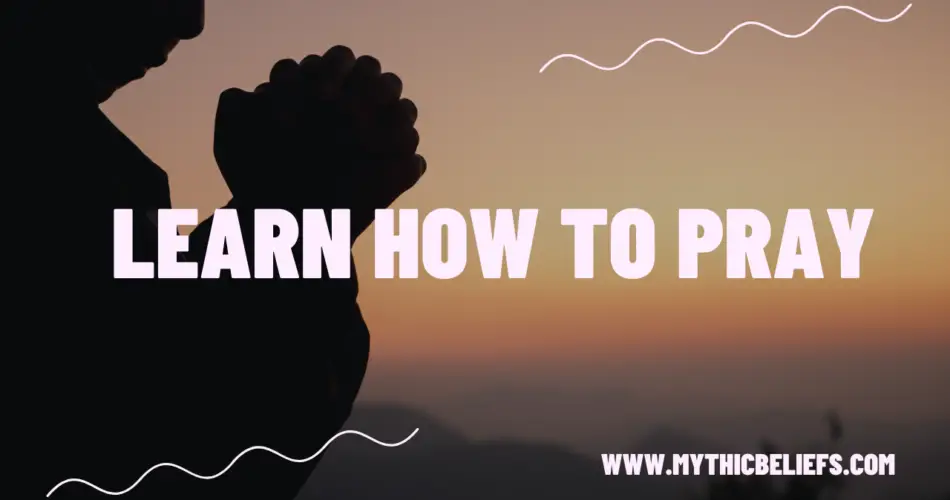Prayer isn’t about getting the words exactly right or following some strict formula. It’s about connection—whether that’s with God, the universe, your inner self, or something greater than all of us. If you’ve ever felt unsure about how to pray, you’re not alone. A lot of people, even those raised in religious households, struggle with it at some point.
I know I did. I remember sitting in my room as a kid, hands clasped, eyes squeezed shut, waiting for some booming voice to respond. Spoiler alert: that never happened. But over time, I learned that prayer isn’t about expecting a dramatic sign. It’s about opening up, being honest, and allowing yourself to be present in the moment.
So, if you’re wondering how to learn to pray, let’s walk through it together. No pressure, no judgment—just a real conversation about finding your way.
What Is the Format for Writing a Prayer?
First things first: there’s no universal rulebook for prayer. But if you’re looking for structure, here’s a simple format that might help:
- Start with acknowledgment. Address God, the universe, or whatever higher power you believe in. It can be as formal as “Dear God” or as simple as “Hey, I’m here.”
- Express gratitude. Even on hard days, there’s always something to be thankful for. Maybe it’s your morning coffee, a kind text from a friend, or just making it through another day.
- Share what’s on your heart. This is where you can ask for guidance, help, strength—whatever you need. And it doesn’t have to be eloquent. Some of my most honest prayers have been a simple, “I don’t know what to do, but I need help.”
- Close with trust. End your prayer however feels natural. Some people say “Amen,” some say “So be it,” and others just sit in silence for a moment. There’s no wrong way.
How Do Beginners Learn to Pray?
If you’re new to prayer, the first step is to let go of the idea that you have to “get it right.” There’s no quiz, no test—just you and your thoughts.
One of the best ways to start? Keep it short and simple.
When I was first learning how to pray, I’d get overwhelmed trying to say the perfect thing. But then I realized—some of the most powerful prayers are the shortest. Think about it: “Help me.” “Thank you.” “I trust you.”
Start with just a few sentences. Say them out loud, whisper them, write them down, or even just think them. The more you do it, the more natural it’ll feel.
And if you ever feel stuck, try praying through gratitude. Instead of focusing on what you need, take a moment to list three things you’re thankful for. Gratitude has a way of shifting our focus and opening our hearts.
How Can I Teach Myself How to Pray?
Prayer isn’t something you master overnight—it’s something you grow into. And the best way to learn? Practice.
Here are a few ways to ease into it:
- Set a reminder. It might feel weird at first, but setting a reminder on your phone to pause for a minute can help you make prayer a habit. Maybe it’s first thing in the morning, during your lunch break, or right before bed.
- Use guided prayers. If you’re struggling to find words, try using pre-written prayers. There are apps and books that offer daily prayers for different situations—peace, strength, healing, gratitude. (Bonus: Many of these are trending in 2025, thanks to the rise of mindfulness apps and digital devotionals!)
- Pray while doing everyday tasks. Prayer doesn’t have to be this big, dramatic moment. You can pray while walking, driving, or even doing the dishes. Some of my best prayers happen when I’m out in nature, just thinking and talking to God like I would a friend.
How Do I Start Praying?
The easiest way to start? Just begin.
Don’t wait for the “right” time or the “perfect” words. Speak from the heart, even if it’s messy, even if you’re not sure anyone’s listening. Prayer is less about the words you say and more about the intention behind them.
If you’re not sure how to start, here’s a simple prayer you can use:
“Hey God (or Universe, or whatever name feels right), I don’t really know how to do this, but I’m here. I’m thankful for today, even if it wasn’t perfect. I could use some guidance, some peace, and maybe a little strength. Help me to trust that I’m not alone. Amen.”
See? Nothing complicated. Just honest, real words.
Conclusion: Give It a Try
If you’re learning how to pray, be patient with yourself. It’s not about perfection—it’s about connection. Start small. Keep it simple. And most importantly, make it your own.
So, why not take a moment right now? Close your eyes, take a deep breath, and just say whatever’s on your heart. No pressure, no judgment—just you and your words.
Have you started learning how to pray? What has helped you? Drop a comment below—I’d love to hear your story.
